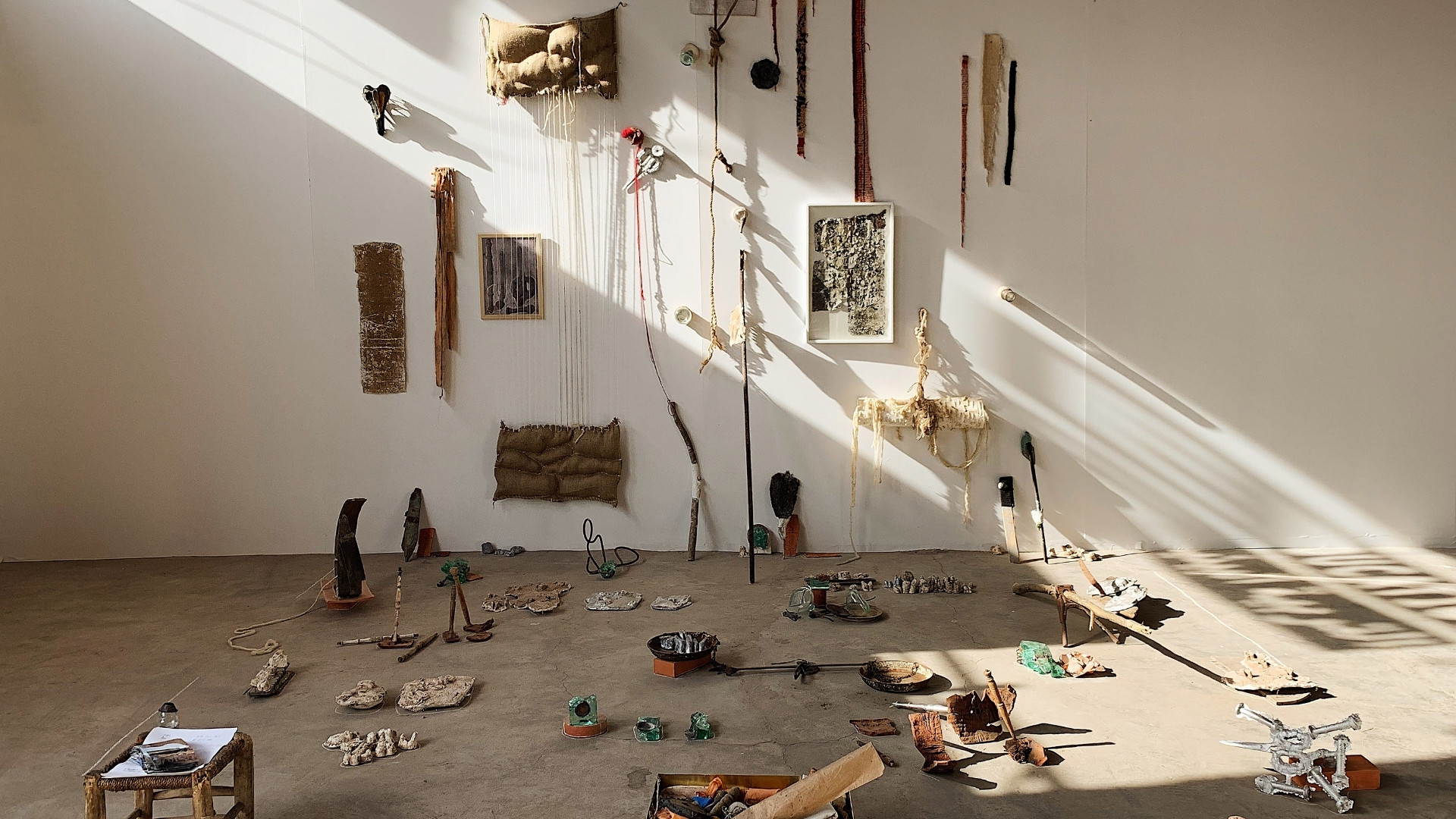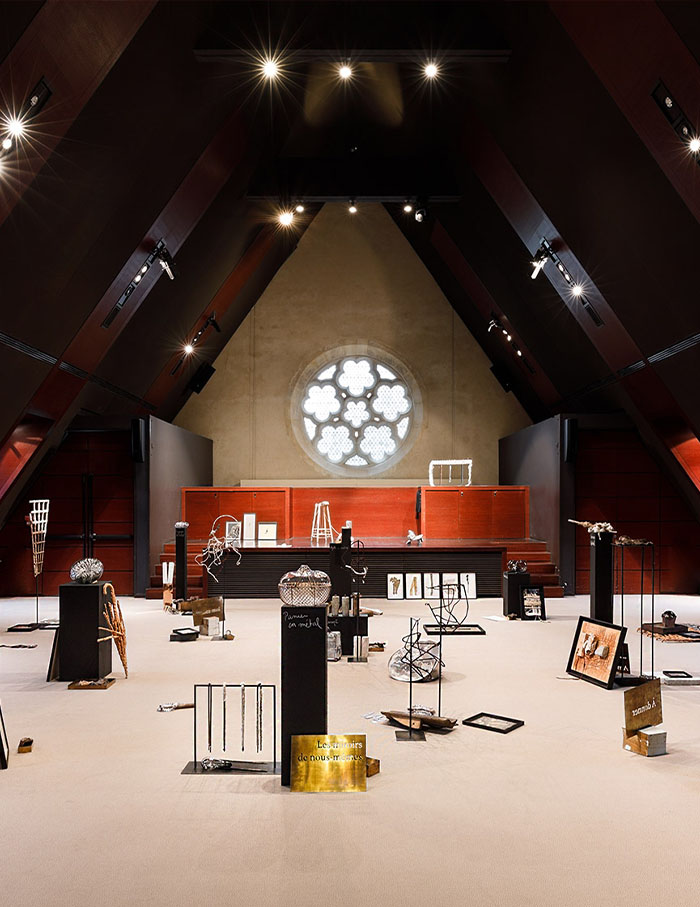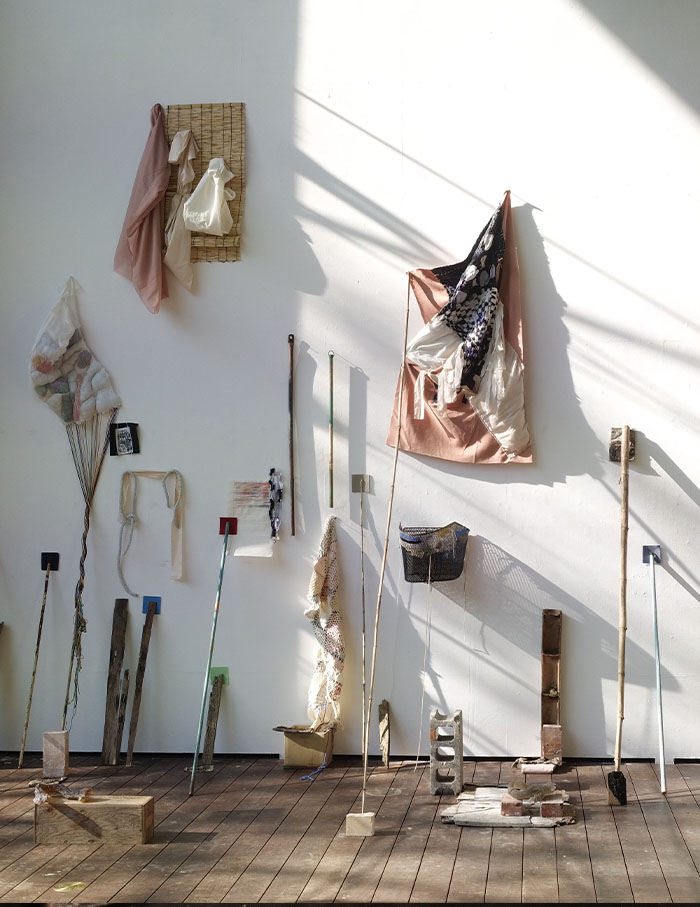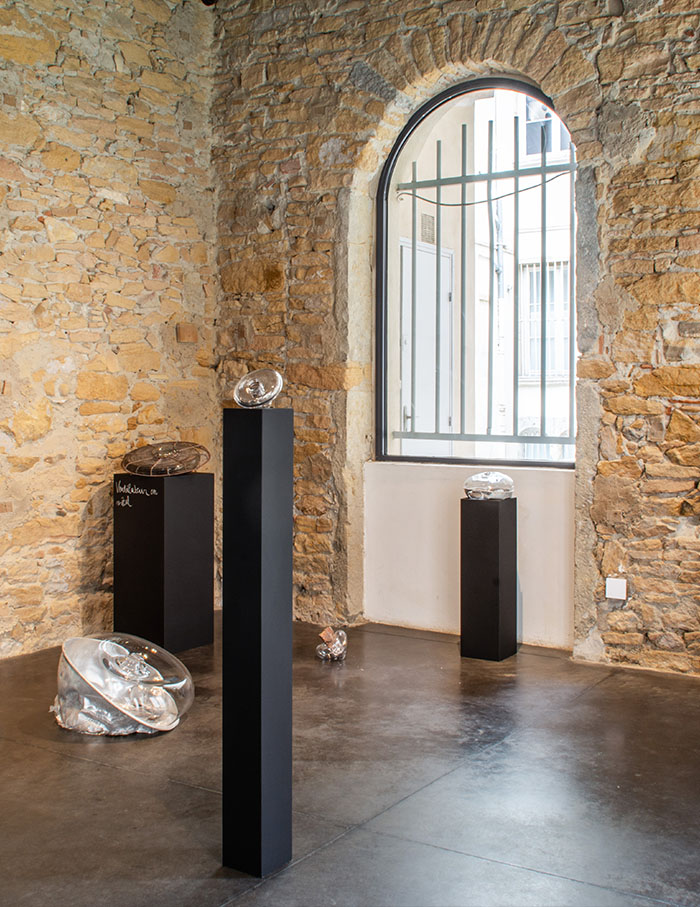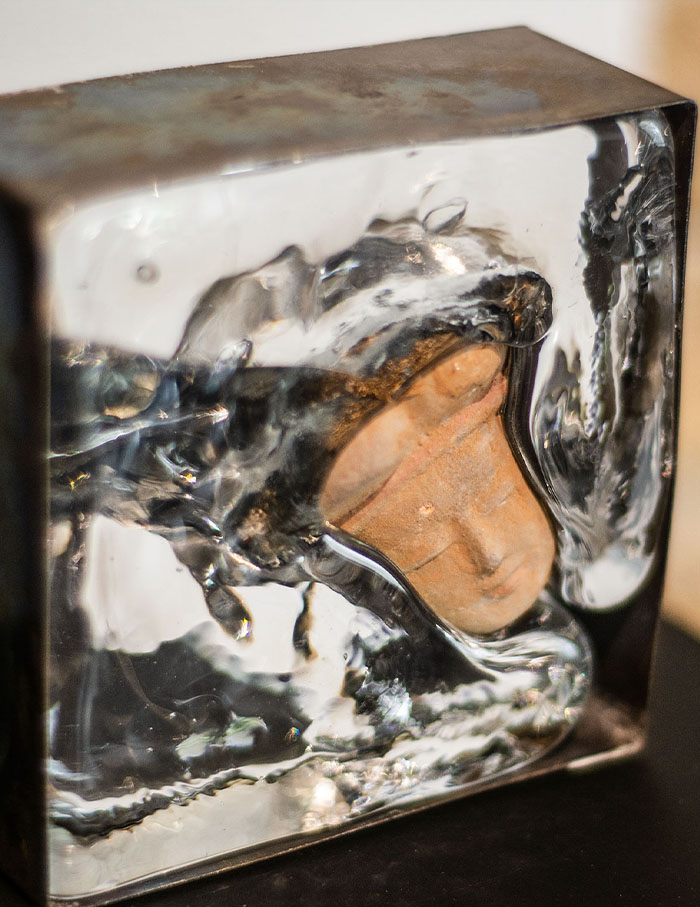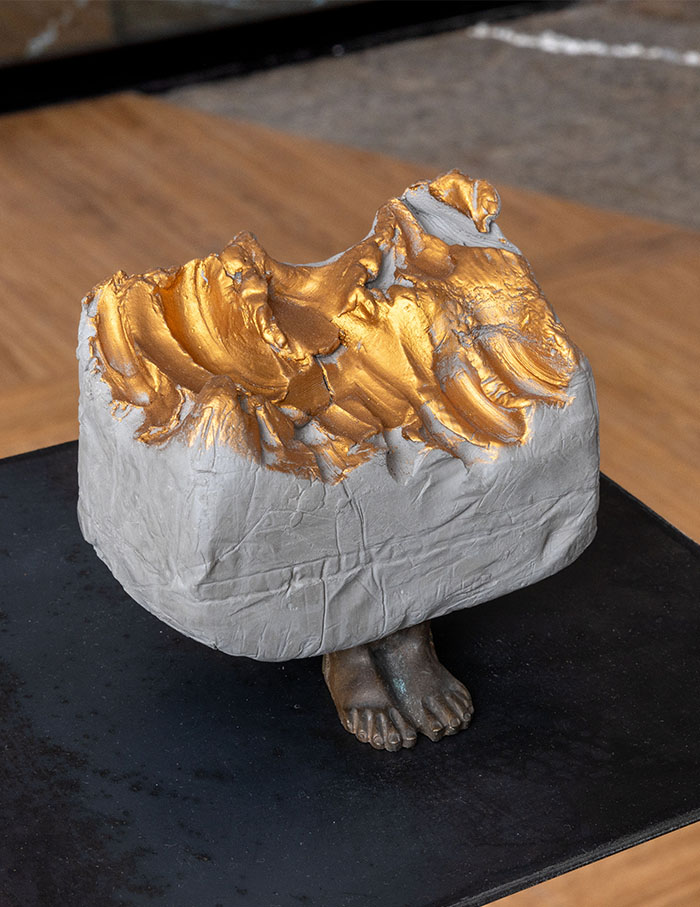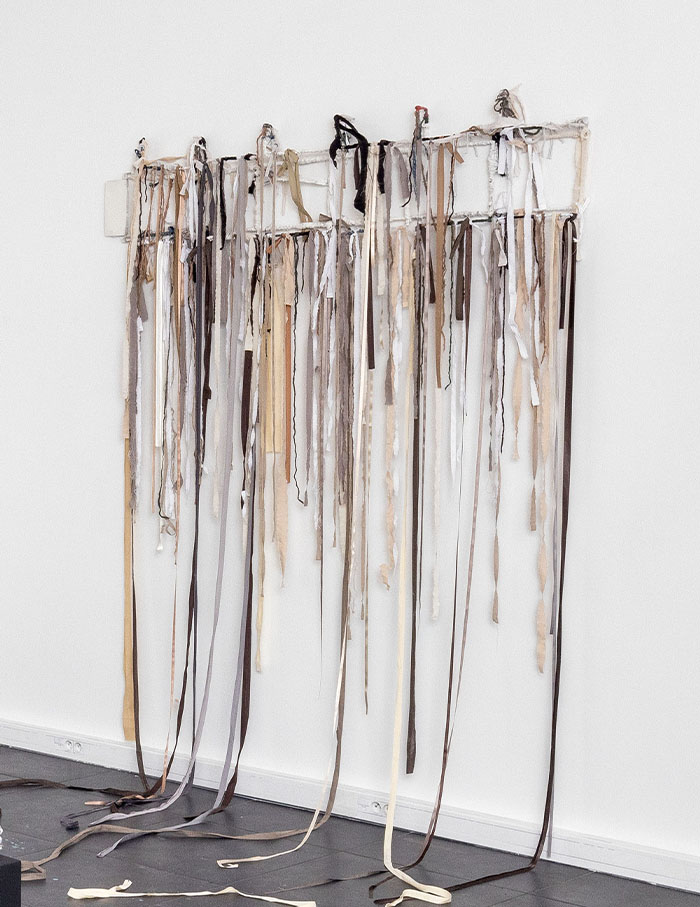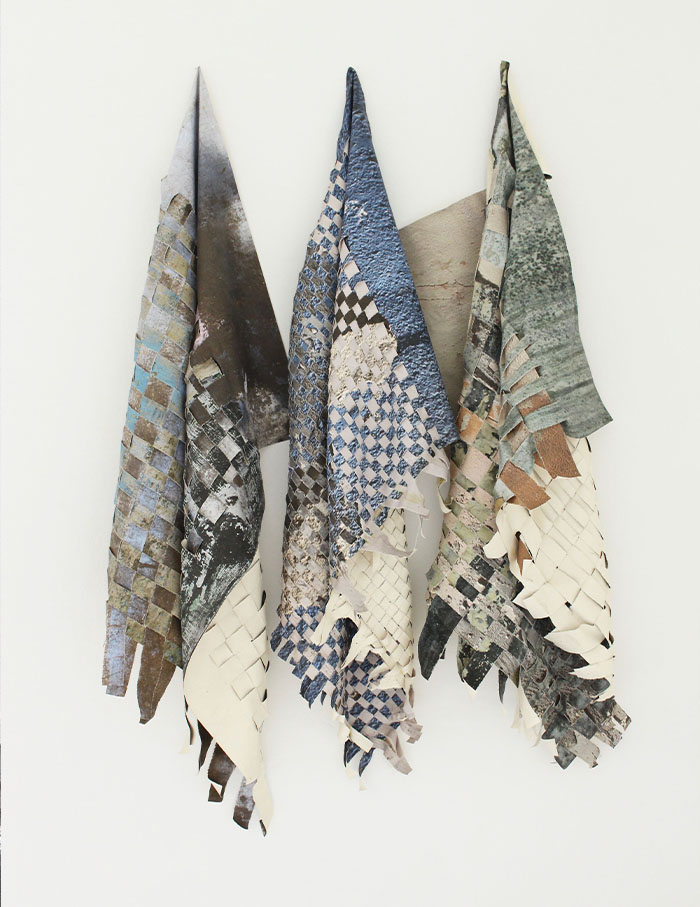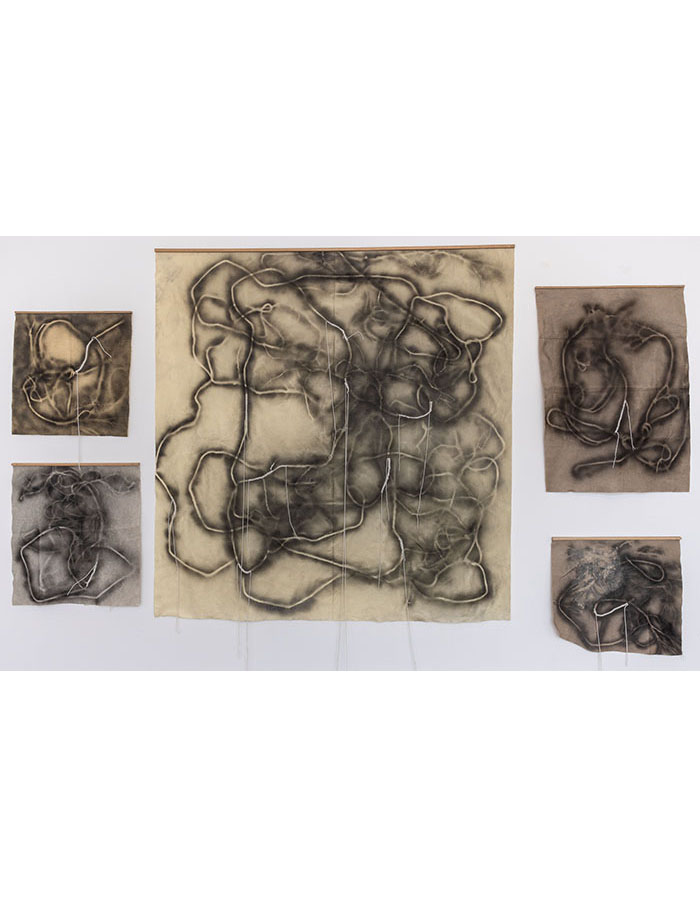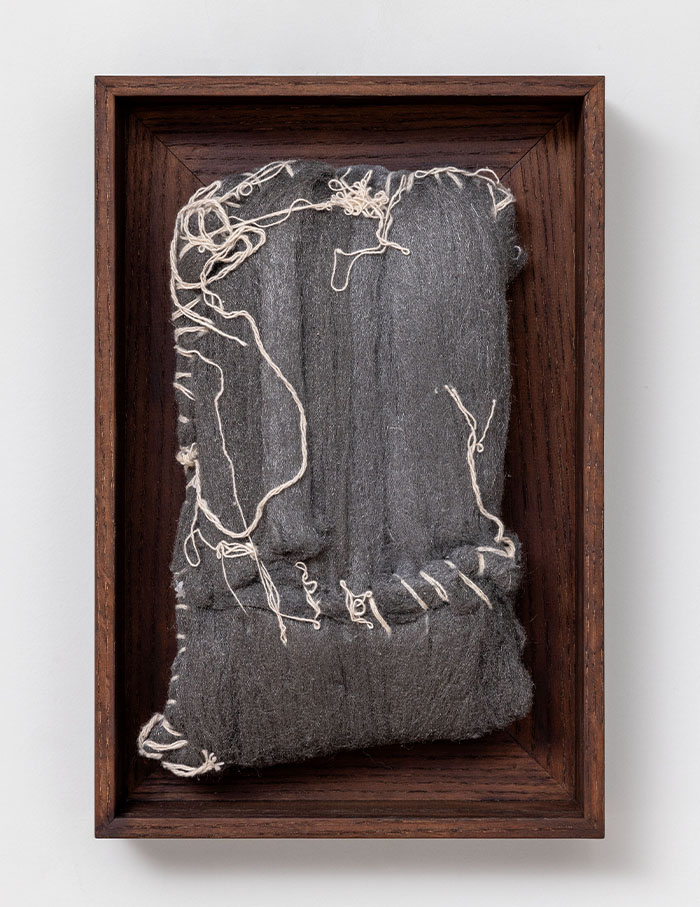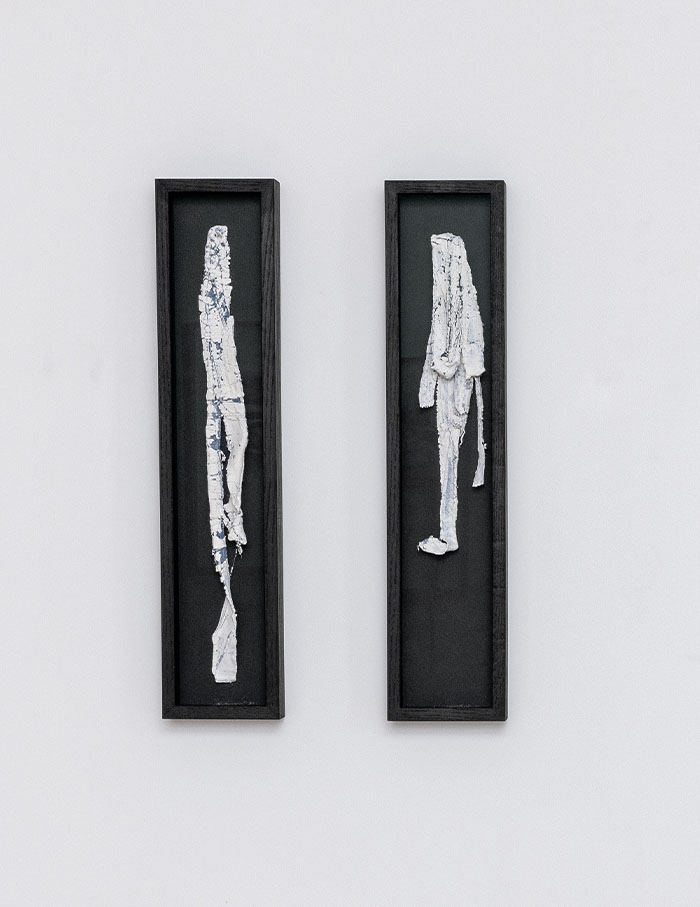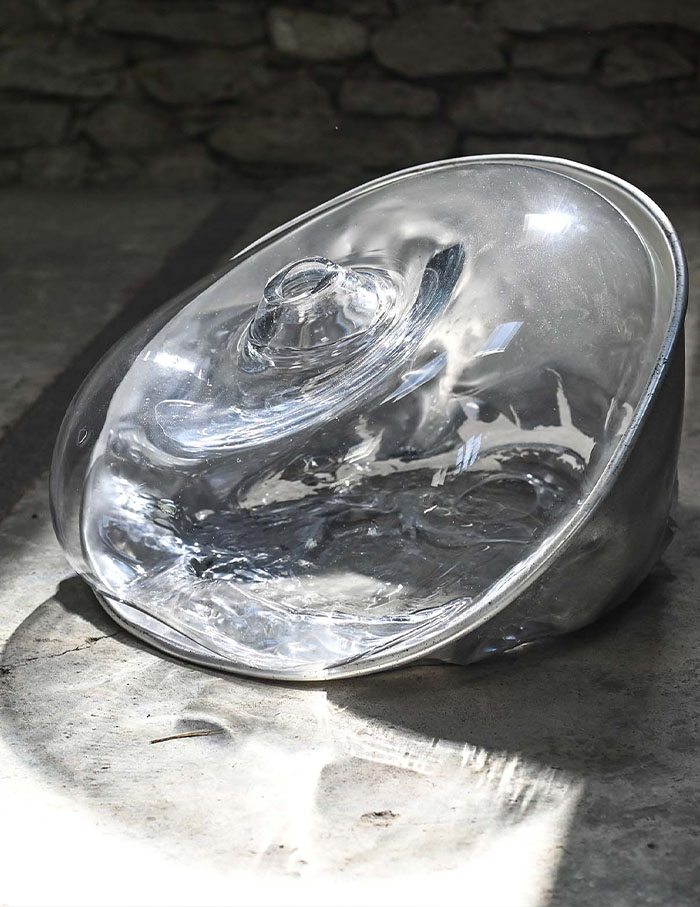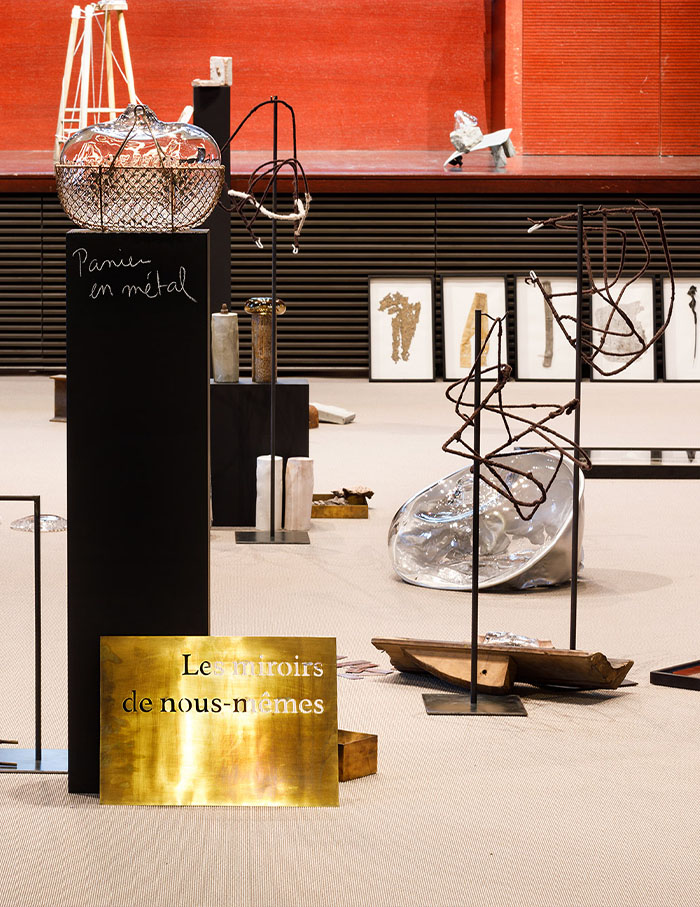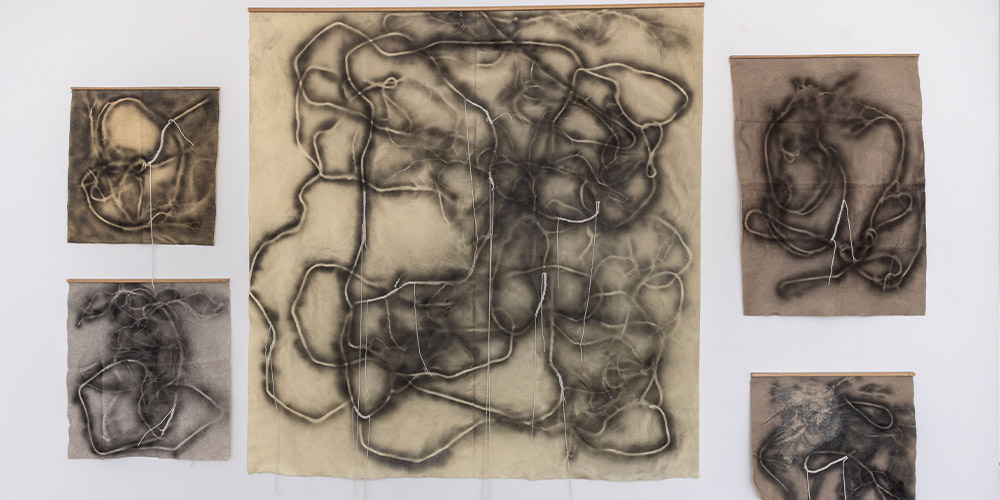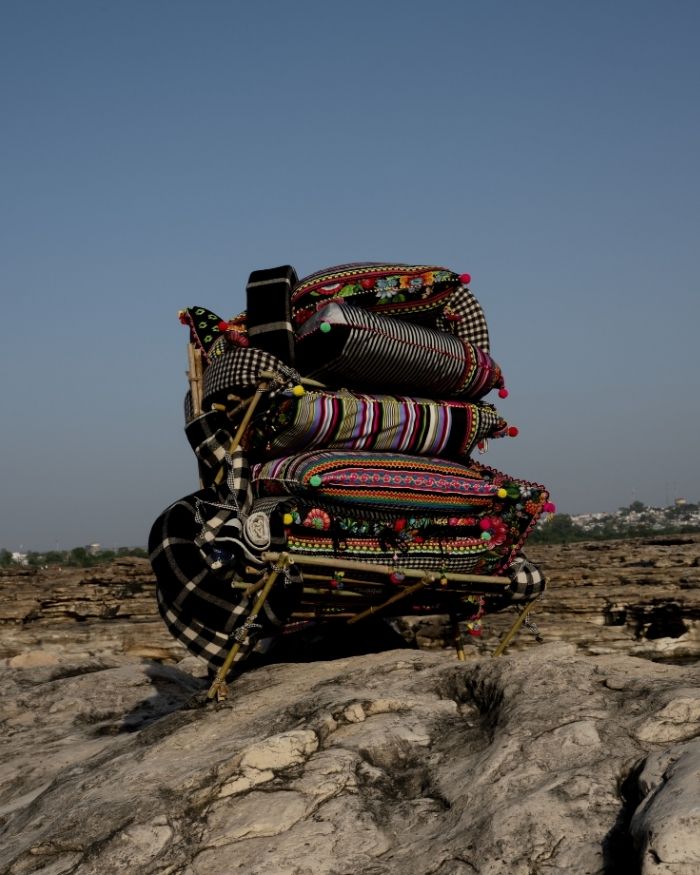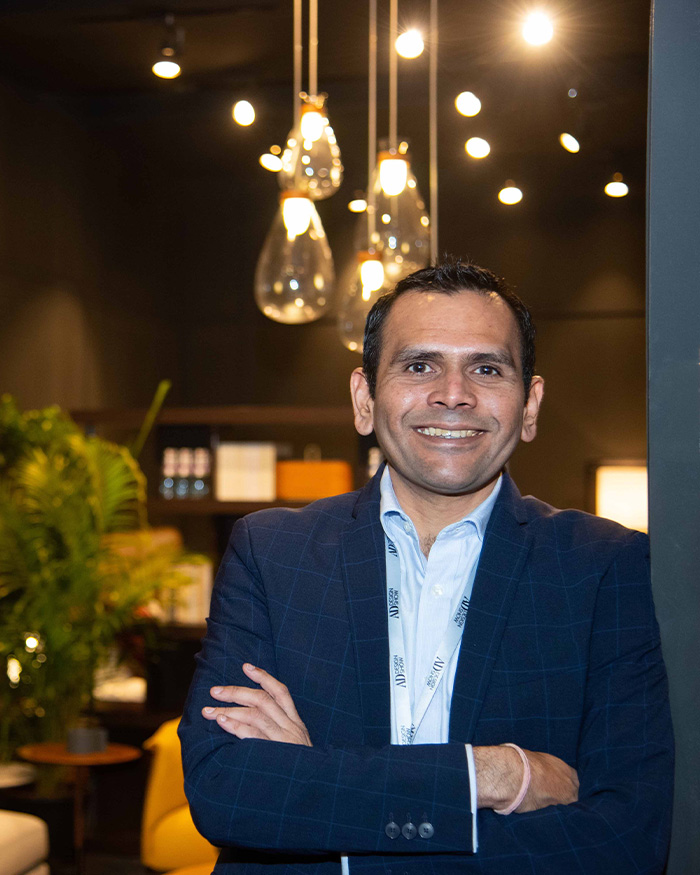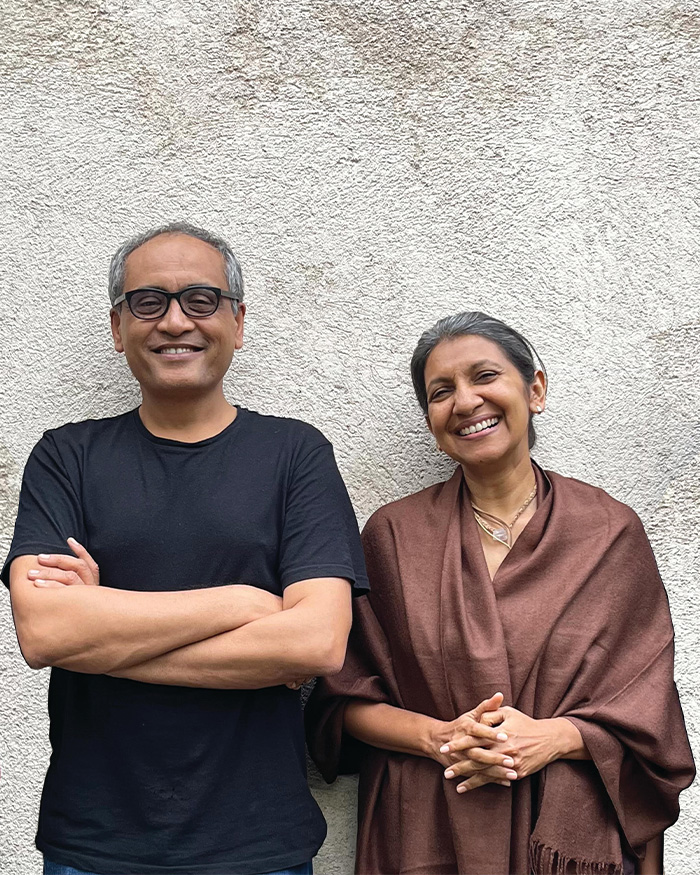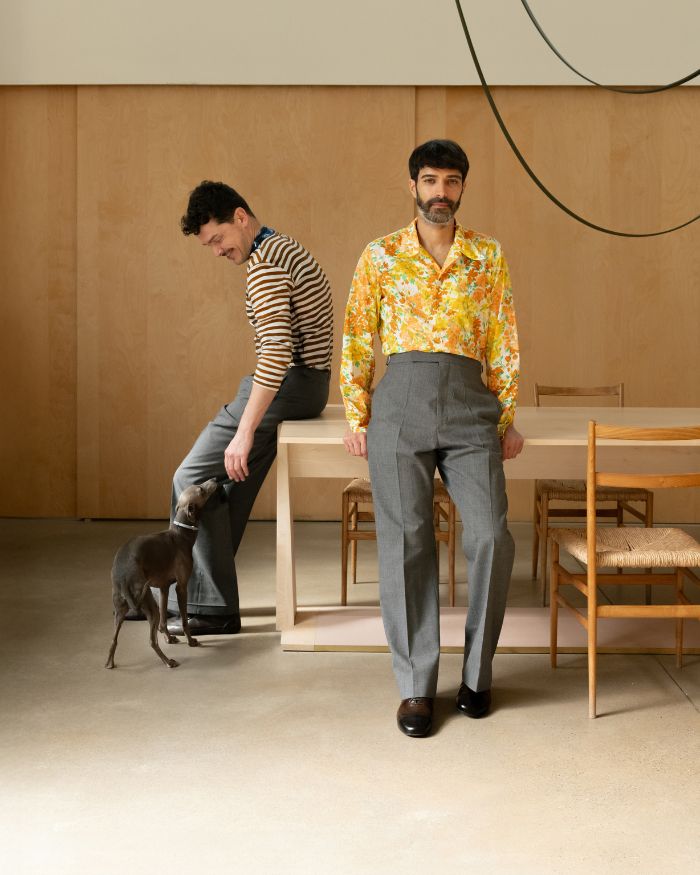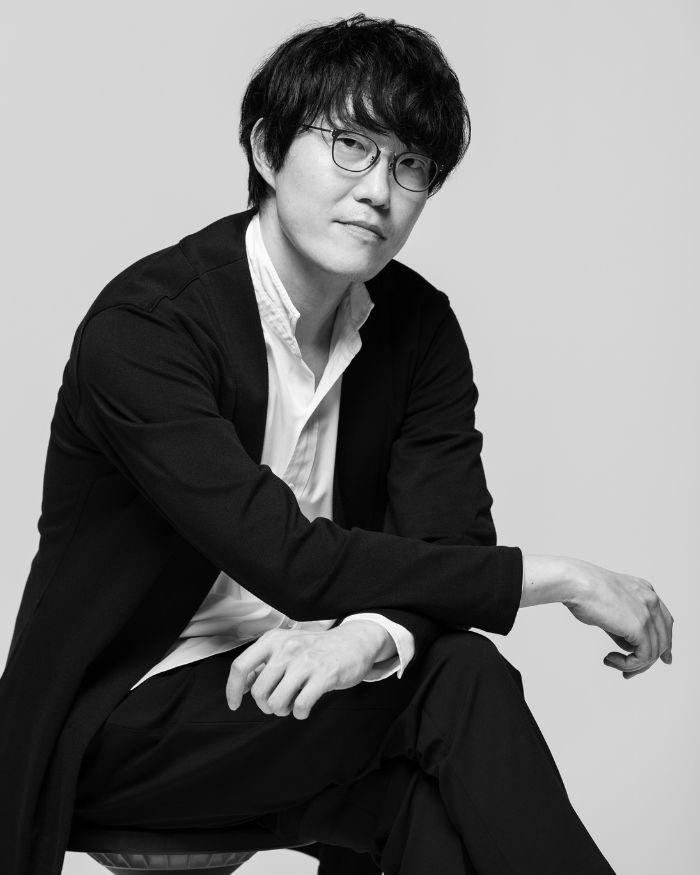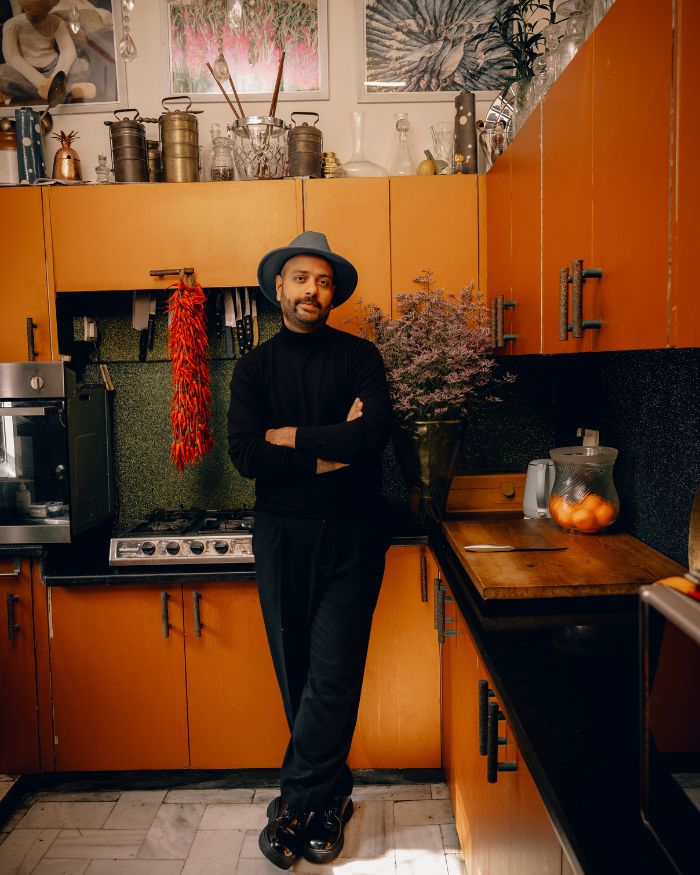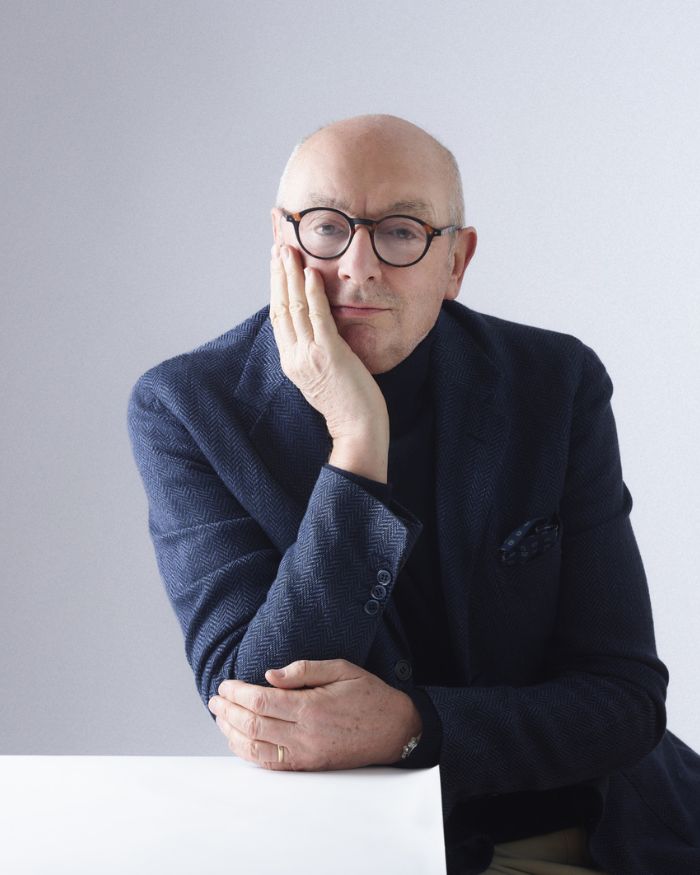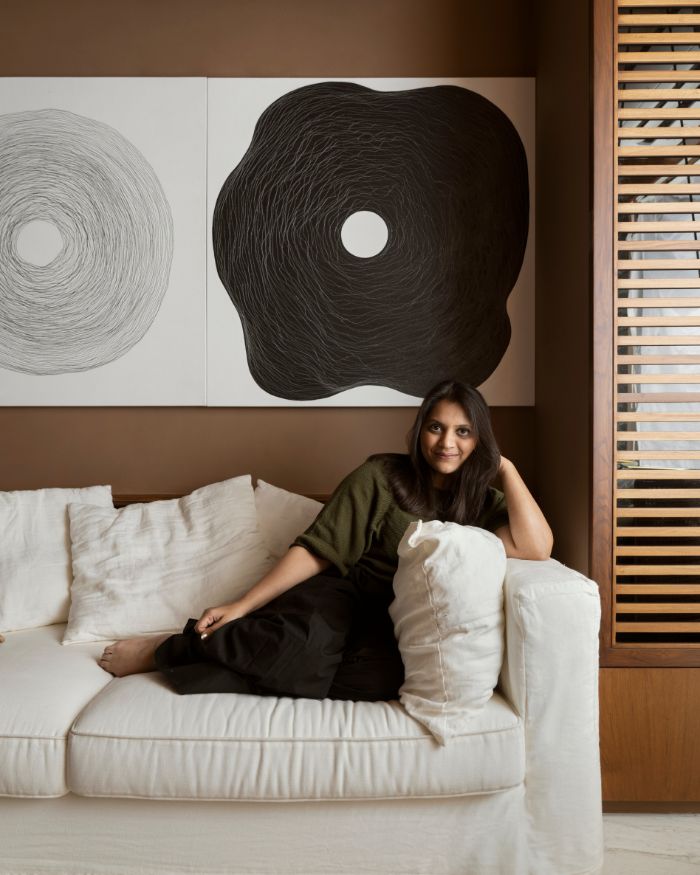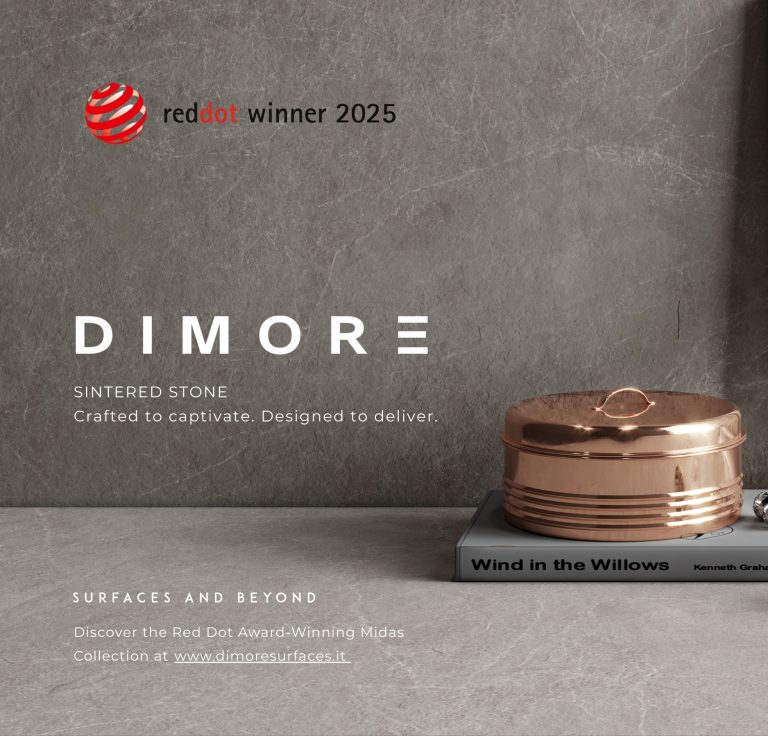Deborah Fischer’s sources of inspiration can be found aplenty in our surroundings. Discarded waste, bunches of fabric scraps, cracks in a wall — the mixed-media artist’s creative process involves weaving an extraordinary tale out of the ordinary. Her poignant reinterpretation of these oft-ignored objects raises questions about the environment and society.
What sparked her love for reusing and adapting to create art? Her creative direction first found an echo in the streets of Kochi, Kerala — a call she is now fulfilling at the Villa Swagatham Jodhpur Residency with the Public Arts Trust of India. Learn more about the artist’s unique journey and how India’s streets have shaped and moulded them with ELLE DECOR India.
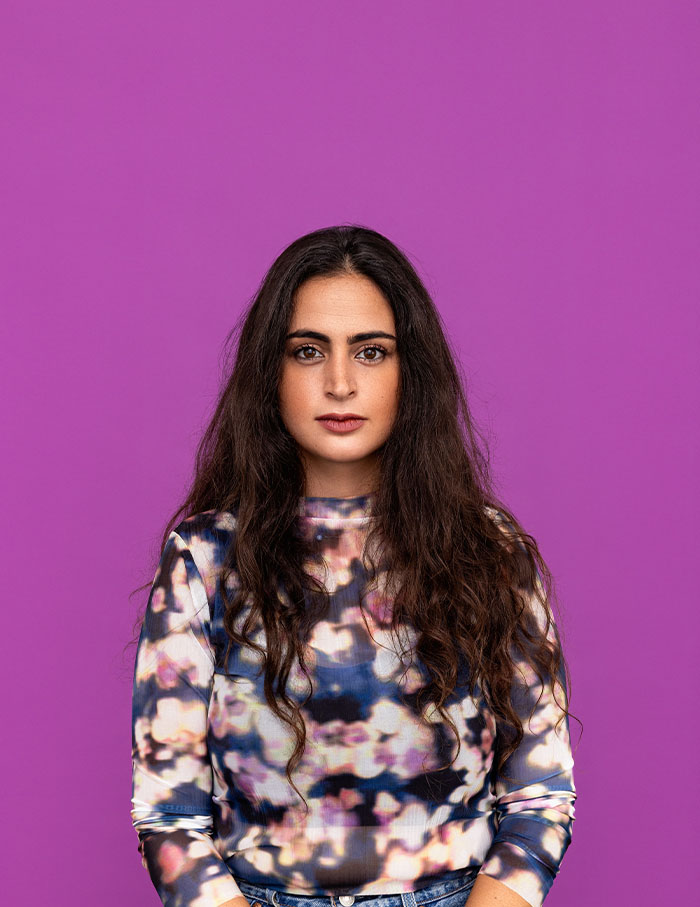
What has been your association with India?
I was 20 years old when I first travelled to India. Travelling through South India, I fell completely in love with the country. I also visited Kochi in Kerala. While walking around a specific neighbourhood in Kochi, I came across a dilapidated wall, and I experienced a strong emotion that stayed with me for years. It was the first time I truly understood what my practice was about: the aesthetic of erosion, of cracks, of time passing.
Since then, I’ve been completely obsessed with Indian walls. I decided to return a second time a few months later and began taking many photographs of destroyed walls throughout India. This marked the beginning of my deep love for the country, and I would say that my entire art practice originated in India. This is now my fifth visit, as I mentioned earlier. Each time I come back, I spend several months exploring different regions. My connection to India is incredibly strong, and it continues to inspire my work.
And what brings you back? Tell us about what you are developing at this residency in Jodhpur?
I am developing work that I began 12 years ago, which I call The Whisperers. Since Jodhpur is famous for its blue walls, I wanted to create a piece that explores what these walls symbolise for people, how time has affected them and the different histories they hold. My residency is focussed entirely on this research that I began years ago.
Being in Jodhpur now gives me a deeper understanding and allows me to concentrate on these walls and their aesthetic. I’m also collaborating with local craftsmen to achieve this. My aim is to highlight Jodhpur’s history and heritage through its walls, examining what they reveal about the city’s patrimony and cultural significance.
What medium are you working with?
I’m a mixed media artist and my practice is diverse. I work with a lot of different materials and create sculptures using various techniques. I collect small objects from different workshops, like those of woodworkers, stone carvers and bamboo craftsmen. I gather the remnants of their work and use them to create sculptures, aiming to highlight the importance of transmitting this traditional knowledge. I plan to collaborate with different artisans, such as bamboo weavers, charpai weavers and stone carvers. My work is going to be quite diverse, and I want to create a large installation that distils elements from these different practices and materials I’ve collected.
In addition to my sculptural work, I also have a performative practice. I perform in public spaces to interact with people on the street and observe their reactions to the performance. I enjoy engaging in public spaces because it’s a compelling way for me to understand a city’s ecosystem, its cultural fabric and its traditions.
When measuring or gauging a city, what parameters do you consider to understand it? What do you observe to form a connection with a city?
I wander. I enjoy exploring a city to observe its colours, materials, and how people engage with public spaces. My approach is quite global. This is something I worked on a few years ago through weaving. I took a photograph of a city in Japan, specifically Tokyo. From these pictures, I cut and wove them together with textiles and different threads, capturing the city’s colours and textures. To me, each city around the world has its own unique colour, materiality, and even smell.
As a visual artist, I focus on the shapes of objects I find on the street, the colours of the walls, the colour of the fences, and how people interact with their surroundings. This is what inspires me, which is why I love to walk around and sometimes even get lost in a city. It helps me truly understand and encounter a place. It allows me to discover spots that wouldn’t be visible on a map. I like to wander in a city and try to capture its energy.
Three cities across the world that you are particularly fond of?
Tokyo for sure. I lived there for a few months while studying at Tokyo University of the Arts and spent a good amount of time in the city. Tokyo has a really special energy because it’s full of both tradition and modernity. I really like cities that exist between the future and the past, where both coexist. Jodhpur, because I like to form a specific bond with cities where I’ve had the chance to work. Jodhpur is becoming really special to me, especially since I’m focusing on it in my current work. It’s also a city I’ve travelled to often. Jaipur is another city that holds a special place for me. I find it important to connect deeply with the cities I work in as an artist.
The more time you spend in a city, the more you learn from it and the more you can absorb. That’s why art residencies are so interesting to me — they provide the time needed to really connect with the spirit and spirituality of a city. The third city for me would be Marrakech. I had the opportunity to do an art residency there and created a lot of work in the city. The aesthetic of Marrakech is very rich for me. In general, I am drawn to cities that are busy and somewhat chaotic because I find poetry within that chaos. I think cities that are bustling are more complex to understand, but this complexity allows you to find even more poetry.
Deborah Fischer’s Jodhpur residency is part of a collaborative programme by the Public Arts Trust of India and Institute Francais’ Villa Swagatham, hosted by RAAS Jodhpur with thanks to Mr. Nikhilendra Singh. The body of work Deborah developed will be showcased at Jodhpur Arts Week Special Projects Edition from 15-21 October 2024. Visit www.jodhpurartsweek.com for more information.
Read more: A chat with Mathieu Lehanneur: Making history at Maison&Objet 2024 to the Paris Olympics

